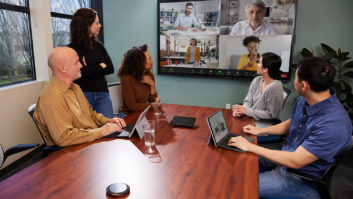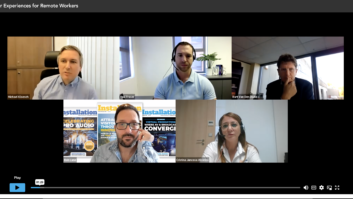
The CMO of InFocus considers what steps need to be taken to improve efficiency in different parts of the industry.
Collaboration is a term that gets used in a thousand different ways, every day. At InFocus, we strive to continuously improve on and provide solutions that allow people to accomplish work across the globe as if they were standing shoulder-to-shoulder.
And we’re particularly focused on true collaboration. When two or more people watch a webinar or live video stream or participate in a video conference call, they aren’t collaborating – they’re co-viewing. True collaboration requires that multiple people view something, understand it and interact with it, simultaneously and in real time. To collaborate is to get things done together, no matter where you are – whether you’re managing a company, streamlining a supply chain or expanding into new markets. Collaboration can be used for the day-to-day management of the important work people do every day to the emerging, mission-critical situations that arise unexpectedly.
We define collaboration as a four-step process:
- Develop a common operating picture – It is critical to all get on the same page about what we’re seeing and working through. Through collaboration the overall picture can be seen in real-time, simultaneously.
- Avail ourselves of all the relevant information – We can access data, share and arrange it in meaningful ways.
- Assemble the information to make it usable – it should be easy and user-friendly to change and provide context to the data.
- Work together to decide what actions to take – collaboration allows for the ability to interact with colleagues while being seen and heard by others in real-time. Furthermore, you should be able to annotate on top of the information happening in real-time. This is the point where everyone is beginning to do the same work as if they are all in the same room. This is where true collaboration starts to take place.
These four steps create real collaboration – and with real collaboration, you can get work done better, faster and more efficiently.
One trend that we have noticed is the need for more collaboration in the workplace largely because of the relationship between global and remote employees. The larger the company, the more complex, and thus the more necessary real and effective collaboration becomes. One of the most challenging and critical industries that depends on collaboration is global manufacturing – companies that have multiple factories worldwide, with incredibly complex supply chains and manufacturing processes. In manufacturing, anything short of peak efficiencies is a problem.
Delivering important solutions for global enterprises means that our channel partners need to have a deep understanding of what the customer is trying to accomplish, listen to them and guide them into solutions they didn’t even know were possible. In our business, we are not just pushing boxes off the back of the loading dock. The customer is looking to the integrator to be an expert and a trusted advisor. The customer expects the integrator to know what will work best for their unique circumstances and demonstrate a resolution to their concerns and needs for a new collaboration solution.
The future of collaboration will involve more information, more places, on more networks and more devices. For example, mobile devices are still in their infancy and will continue to grow in importance as a tool in collaboration. We also believe that as virtual reality becomes more commonplace, it will naturally evolve into another extension of collaboration, taking it to the next level. Not only will you be able to see and interact with something in real time, you will also be able to virtually be there. That’s real collaboration.






